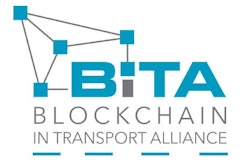
Optical Character Recognition (OCR) is the industry standard for invoice processing in the United States, but the time has come to put it to rest – and for good reason. Invoice processing is an immensely important and, at times, complex component of the supply chain that requires high volumes of transactional data between buyers and suppliers to be captured, stored and visualized. Much like email eliminating the need for faxes, OCR is ripe for replacement.
The advent of OCR technology was a massive improvement over paper invoicing, and it now accounts for about 40 percent of the total US invoicing volume. Keeping in mind less than 20 percent of invoices are sent though electronic formats, it’s clear that a combination of old-school paper and OCR invoicing processes still dominate. Why is it that the majority companies in the US still use analogue systems while companies Latin America and several European countries are leagues ahead in standardizing electronic invoicing?
This simple answer is the US has no government mandated invoicing standards and other countries do. These invoicing standards, in addition to aiding audits and preventing tax fraud, set a level playing field in these other regions and require organizations to adopt data rich e-invoicing processes. Meanwhile, the U.S. is still well behind the curve. Even companies using advanced e-invoicing initiatives ultimately struggle because they tend to place significant burden on suppliers to conform to a certain electronic invoicing type, while suppliers and their other buyers may still use paper or OCR. Putting responsibility on the supplier to invest in new systems and processes is simply not an effective short term way to support the adoption of e-invoicing in the U.S.
For the U.S. to get up to speed we must begin to implement readable PDF’s while not leaving behind suppliers who process invoices through more traditional methods. The majority of manual invoices created by OCR are imported into an accounting system and emailed. Fortunately, many of these systems also produce a readable PDF option, which is a complete game changer. Readable PDFs, as opposed to normal PDFs, which are simply images of the document, have a structured text file embedded into the document. These structured text files can be read, processed and validated into true e-invoices using newly developed software from a variety of e-invoicing solution providers, including Basware. Best of all, the supplier can still send the same invoice and file type they currently send to buyers. The readable PDF output for manual OCR invoices serves as the link necessary for organizations to move to complete e-invoicing solutions without alienating suppliers who still rely on older processes.
Although paper and OCR are not going away tomorrow, readable PDF invoicing serves as a versatile format that works for old and new school buyers and suppliers. In the meantime, e-invoicing adoption rates must inevitably rise and open the door to the new world of supply chain efficiencies and financing opportunities. New technologies always have hurdles in the adoption phase, but as the world of supply chain marches forward into digital transformation, backwards compatibility and versatility will be the greatest asset to ignite acceptance, growth and standardization of e-invoicing.

















![Pros To Know 2026 [color]](https://img.sdcexec.com/mindful/acbm/workspaces/default/uploads/2025/08/prostoknow-2026-color.mduFvhpgMk.png?ar=16%3A9&auto=format%2Ccompress&bg=fff&fill-color=fff&fit=fill&h=135&q=70&w=240)

